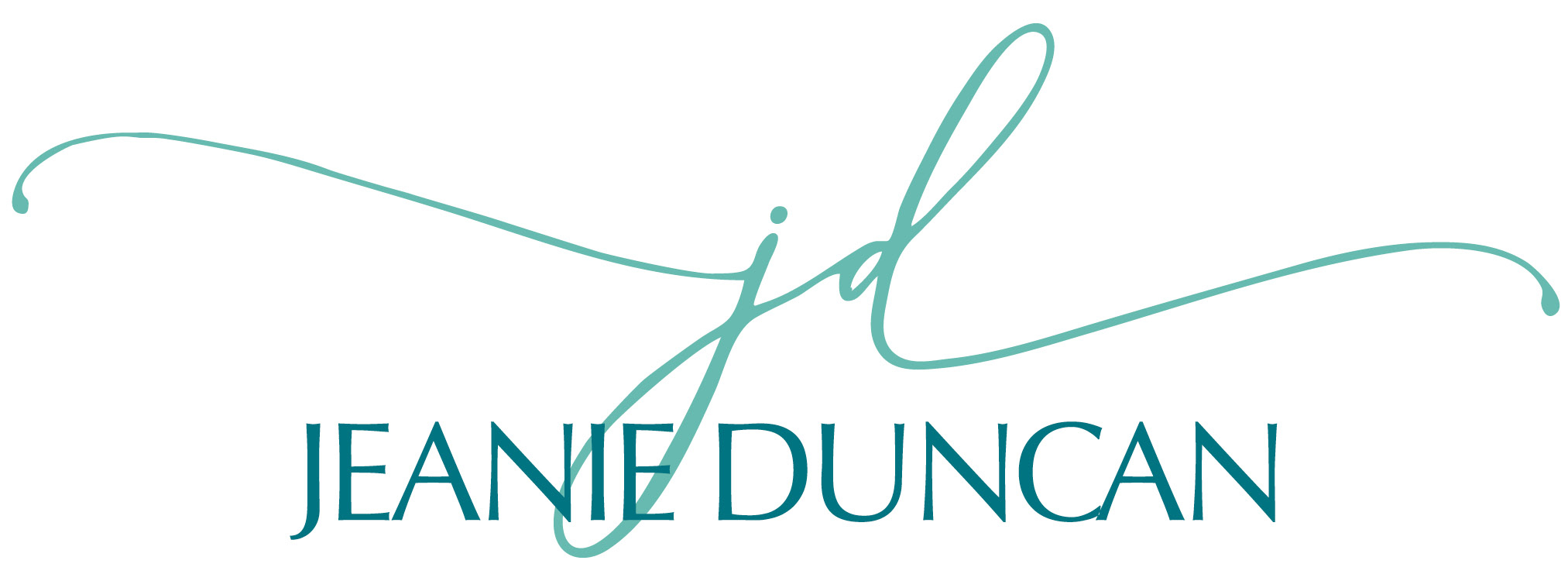
Feb 18, 2014 | Leadership, Transition & Change, Uncategorized

One of my favorite leadership books is “Leading with Authenticity in Times of Transition” by Kerry Bunker and Michael Wakefield. For a business world awash in leadership titles, this one is a particular jewel because of its focus on the complex human dynamics of transition. I find that organizations are often quite adept at addressing the structural side of change – reorganizing, restructuring, creating new vision, mission, strategy, and so on. What I see far more struggle with is leading and attending to the human side of change – letting go, grieving loss, building hope, and exhibiting compassion.
With high expectations and great demands on our time, the tendency is to fast forward through, or skip altogether, the space needed to reflect on and process the emotional impact resulting from change. But when these emotions are not accepted and addressed as natural and important components, resistance can intensify over the change continuum.
In my career, I’ve served in a number of executive leadership roles for nonprofit organizations. Often, we faced significant organizational change that involved not only our own organization, but also stakeholders and other partnering community groups.
From my experiences, I’ve learned that addressing the delicate human dynamics of change is absolutely critical. A question I ask is “where do you want the pain?” For me, it’s a point of either leaning in to these elements early on – shortly after the change event is announced and acknowledged – or coming back to it later in the process when an organization is trying to implement new process and structure. I find it far better (after much practice, and even failure) to meet it early on. It’s arduous, messy, the process takes longer…and it is absolutely the right thing to do. Get it right, and the resultant implementation can soar.
From these experiences, I’ve grown as a leader, developing compassion, concern, and genuine care for my team and others – a much-needed muscle to lead effectively. Early on, it didn’t come naturally. I wanted to move fast, make decisions, take action, and move on. And I see this in many organizations I work with today.
As Bunker and Wakefield point out, leaders must:
- Examine their behaviors and emotions tied to change and transition. This begins the process of operating from a place of authenticity as a leader.
- Establish and protect trust. Without trust and honesty, authenticity and credibility suffer – undermining otherwise solid change initiatives or management decisions.
- Find a balance between structural leadership and people leadership. By learning important competencies for leading in times of change and transition, leaders gain a new perspective from which to operate.
Later this week, I’ll post more on key leadership competencies critical for transition. What are some of your successful practices in leading through transition?
“You get the best effort from others not by lighting a fire beneath them, but by building a fire within them.”
–Bob Nelson

Aug 27, 2013 | Career, Coaching

I am a coach today because I’ve experienced coaching’s transformative power in my own life.
Over my career, I’ve worked with several coaches. I’ve hired them for career and leadership related priorities, but every time the impact of the coaching has been much farther-reaching, affecting me deeply as a whole person.
I remember the first time I hired a coach – I was contemplating a critical career move, pursuing the President and CEO position of a large nonprofit arts organization. At the time, I was director of development for the organization, a position I had held for several years. I was really excited about the opportunity; I felt ready for it, and the timing seemed right to me. But before making my thoughts known to my organization’s board and others, I wanted to be sure I was the right person for the job.
Because I was already internal to the organization, I knew how important it was for it to have the ideal leader who would bring great energy, fresh perspective, and new ideas. I wanted to test my assumptions that I was that person. At the time, I didn’t really know exactly what a coach did or how one would approach his or her work. I just knew that I needed a professional with whom to brainstorm confidentially—someone who could help me work through my critical career decision.
My coach listened to my story and asked a lot of questions. Her probing peeled back the layers and made me think of this transition, my readiness, and fit in ways I hadn’t previously…and wouldn’t have been able to do alone. I liked how she stretched and challenged me. It wasn’t simply what I thought, but why I held my thoughts and beliefs, and the impact of the actions I took based on those ideas.
The questions my coach asked seemed so simple, yet they were powerful and razor-sharp. Have you ever had an experience that made your head spin? This is what I remember about these encounters: I’d leave the session and need to sit in my car awhile before I could drive away. The shift she helped me create was profound.
After a few sessions, I confirmed my decision to pursue the opportunity, and in 2003 I was appointed to the position of President and CEO. It was exhilarating! I loved my new venture, and I went to work eagerly on my vision and goals for leading this great community organization.
About six months into my new role, I felt myself searching for a strategy partner – someone who could be a sounding board for my big dreams and ideas, as well as my frustrations, fears, and uncertainties. I wanted someone I could really trust and be vulnerable without fear. I had truly begun to understand the cliché, “It’s lonely at the top.” I could count on three fingers the number of people in whom I could confide. And none were quite who I needed to challenge and stretch me and to hold me accountable. So, for the second time in my career, I hired a coach.
“Our deepest fear is not that we are inadequate. Our deepest fear is that we are powerful beyond measure. It is our light, not our darkness, that most frightens us.” –Marianne Williamson
I remember the relief I felt when I found my new coach. With him, I didn’t have to be careful with my words, politically correct, or worried about what I said. It was completely freeing…and deeply empowering. He didn’t give me advice, problem-solve, or tell me what to do. But rather, my coach was my partner, posing thought-provoking questions and encouraging me to tap into my own inner wisdom and sense of knowing for direction. It was like an intense workout to develop new muscle.
I worked with him for about a year, and then asked for his help again years later when I made the decision to step down from my position. I knew I had completed what I set out to do in the role, but I wasn’t sure what I most wanted to do next. In working with my coach, I decided to take a year off to clear my mind, explore creative pursuits, and simply relax and play. It gave me much-needed time and space to ‘incubate’ what would come next.
During this year off I began to shape my own business. When I freed up my “internal hard drive,” I realized more clearly what I loved most and wanted to do. I had derived great satisfaction from helping organizations and their leaders tackle tough business issues, crises, and transitions. In my work, I often had been called upon to help nonprofit organizations with challenging matters related to funding, personnel, governance, and programming. I reflected on my best work in assessing and navigating the complexity of these uncertain and often turbulent situations and inter-relationships. My coach helped me see that this work I’d been doing—and really enjoying—was organizational and individual coaching.
I proceeded to complete training and certification through the Coaches Training Institute (CTI), the largest and oldest coach training organization in the world. Coaching is a core part of my business today because of my own personal experience in working with a coach and my passion for helping others navigate their challenges and opportunities and realize their greatest potential. I continue to experience coaching’s transformative power in my life, and I am gratified to see its impact on my clients. I can think of no greater joy.
 About Jeanie Duncan: Jeanie is President of Raven Consulting Group, a business she founded that focuses on organizational change and leadership development in the nonprofit sector. She is a senior consultant for Raffa, a national firm working with nonprofit clients to lead efforts in sustainability and succession planning, executive transition and search. Additionally, Jeanie serves as adjunct faculty for the Center for Creative Leadership, a top-ranked, global provider of executive leadership education.
About Jeanie Duncan: Jeanie is President of Raven Consulting Group, a business she founded that focuses on organizational change and leadership development in the nonprofit sector. She is a senior consultant for Raffa, a national firm working with nonprofit clients to lead efforts in sustainability and succession planning, executive transition and search. Additionally, Jeanie serves as adjunct faculty for the Center for Creative Leadership, a top-ranked, global provider of executive leadership education.
Dec 11, 2012 | Leadership, Women
Part II of “Infusion of the Feminine Element in the American Workplace” (Part I posted on August 14, 2012)
“If you think you would exercise it ethically, don’t disdain power. You must embrace it as the essential currency for making things happen.”
– Kim Campbell, former prime minister of Canada
Think about it: What would our world really be like if more women were in charge? If we had a female President. If far more of our Fortune 500 companies were led by women (2% currently). If half of the positions in the US Senate and House were held by women (presently 16%). And if more women were partners in law firms or federal judges (now only 15%). What difference would it make?
I think more women in these roles would in fact make things better. I’m not espousing women versus men nor insinuating one gender superior over the other (tempting as it may be). I simply believe that a more even balance of male and female leadership would yield a world with greater cooperation, flexibility, less conflict, increased dialogue, and cultural understanding.
These characteristics and differences contribute in significant, meaningful ways – results that positively impact a business’ bottom line and yield a more diplomatic culture. This isn’t just my opinion, but evidence backed up by countless studies.
According to Catalyst (a research and advisory organization that tracks women in business), “Fortune 500 companies with the highest representation of women on their boards performed better financially – significantly better. Those with the most saw a 53% higher return on equity, a 42% higher return on sales, and a 66% higher return on invested capital. Findings were consistent across invested capital and industries.”
And in the political realm, while the vast majority of current world leaders are male, women have rapidly assumed these roles, now leading some of the largest, most populated, and most economically successful countries in the world. Female leaders work to ensure diplomacy, freedom, justice, equality, and peace. Presently, we live in a time with the highest total number of female leaders serving simultaneously.
These are compelling reasons for balanced leadership in both the business and political jurisdictions. And this peaks my curiosity…what are the key differences with female influence? The following sources offer a few perspectives.
- Esther Wachs, in her book Why the Best Man for the Job is a Woman examined the careers of 14 top female executives to learn what makes them so successful. Her findings reveal that women have a natural willingness to reinvent the rules, ability to sell their visions, the determination to turn challenges into opportunities – all with a focus on “high touch” in a high tech business world.
- Dee Dee Myers, in Why Women Should Rule the World, proposes that it isn’t a debate about nature or nurture – it’s both. “New tools have allowed scientists to find structural, chemical, genetic, hormonal, and functional differences in male and female brains. And those differences affect the way men and women process language, solve problems, and remember emotional events. They shape our responses to everything from stress, to love, to the funny pages.”
- And in Deborah Tannen’s 1991 best-seller, You Don’t Understand! Women and Men in Conversation, she concludes that “boys’ and girls’ early social lives are so different that they grow up ‘in what are essentially different cultures.’ Thus, talk between women and men is in fact cross-cultural communication, fraught with as many potential misunderstandings as communication between individuals from different countries, ethnic backgrounds, languages, or religious groups.”
As a matter of basic world view, Tannen establishes that “men see themselves as engaged in a hierarchical social order in which they are either ‘one up or one down’ in relation to others. Their communication styles and reactions to others’ communications often stress the need to ‘preserve independence and avoid failure.’ Women, on the other hand, tend to see the world as a ‘network of connections,’ and their communications and interpretations of others’ communications seek to ‘preserve intimacy and avoid isolation.’”
Whether male or female, I think most of us realize that dominating leadership style is becoming less and less popular, replaced with a growing presence of leadership that exhibits flexibility, empathy, openness, and valuing differences. The role of women is helping to build understanding around these values that really matter and make a difference.
I’ve been fortunate to grow up surrounded by strong women – my mom, sister, aunts, and countless mentors. As a result, I’ve always thought that women are very capable leaders – not because women are better or the same as men, but because the many ways women and men are different.
So, I wonder, why don’t women take the lead more? What holds us back? I’ve given this a lot of thought lately and drawn conclusions based on my own experiences as well as accounts shared by Myers and other authors writing on female leadership.
- Women are often given the same responsibility without corresponding authority. We have less power – office, rank, money. As in Myers’ case, the President made the job of Press Secretary less important than it had been previously, and, as a result, it made her less effective.
- We don’t negotiate. We’re simply not socialized to do so. According to Linda Babcock and Sara Laschever in Women Don’t Ask: Negotiation and the Gender Divide, “Whether they want higher salaries or more help at home, women often find it hard to ask. Sometimes they don’t know that change is possible – they don’t know that they can ask. Sometimes they fear that asking may damage a relationship. And sometimes they don’t ask because they’ve learned that society can react badly to women asserting their own needs and desires.”
- We have to fight to be a part of the conversation. Being in the room is not the same as being in the conversation. Women are often treated like they’re invisible. For example, I experience the following situation far too often, and I’ve witnessed the same among my female colleagues: I’ll be at a meeting, and I offer up a comment or perspective, and the conversation continues as if I never spoke. Moments later, a man says virtually the same thing, and his point is acknowledged by several in the group. What the hell! I admit that, as women, we often fail to state our thoughts and ideas forcefully enough – I certainly can be guilty of that. But there’s no way that can account for the frequency with which this happens.
- Sometimes, a woman simply being in the role can make it seem less important. “In fact, women devalue whole sectors of the economy just by showing up,” Myers states. “Studies show that both men and women attach less prestige to certain professions if they have more women – or are expected to have more women in the future. Not only can the presence of women devalue certain jobs, but also it’s often not until the job is devalued that women are even hired. It’s a no-win situation.”
- As women, we have to take the world as we find it. We know that the American culture, systems, and structures are a white male establishment. While it is changing and evolving, anyone functioning in the American workplace must work within that dynamic. “When women in positions of authority conform to traditional female stereotypes, they are too often perceived as ‘too soft’ to be effective,” states Myers. “And when they defy those norms, they are considered ‘too tough,’ unnaturally masculine and out of sync”…a bitch, in other words. There are so many ways for women to lose at this game.
- Women lack access to informal networks. In 2005, the research organization, Catalyst, talked to 950 top executives – both men and women. Fifty-five percent of women said they wanted to be CEOs – virtually the same as the number of men. So why don’t more advance? A quarter of the women said they lacked operational experience, but nearly twice as many said that it was because they were shut out of the informal networks – golf, poker, men’s clubs – where information gets exchanged, relationships get established, and careers get launched. Over time, these little differences become a significant cumulative divide.
- People are more judgmental about a female’s performance and less forgiving of her mistakes than they are of her male counterpart’s. People wonder: Can she stand up to her opponent? Can she think on her feet? People simply assume men are tough enough, but women have to prove it. It’s a fine line with great expectations and little margin for error.
Given these thoughts and others, in the end it’s not necessarily the lack of intrinsic aptitude that keeps more women from pursuing careers in fields like physics and engineering; rather, it may be that their different realities compel them to make different choices. It’s time that those realities are recognized as every bit as relevant, important, and valuable as men’s.
While many variables contribute to holding us back or interfering with our path to success, I conclude too that we – as women – have to get out of our own way. Regardless of the environment in which we operate and the tendency sometimes to blame, we are part of our own problem. I believe this most often when we don’t take or claim our power. Or when we fail to be courageous and stand up for our peer female professionals and confront inequities in the moment, head on. And there are those situations where we act too masculine, not allowing for the time and texture of the feminine accent.
Clearly, men and women are different. And because we’re different, women will bring a varied mix of experience, values, and points of view. We will expand the range of what’s acceptable and what’s possible. It’s in our economic, social, and political interest to create a world that’s freer and fairer. Where everyone has their power and is allowed to use it. Where everyone is judged by their performance – and their potential.
Sources:
- Myers, Dee Dee. Why Women Should Rule the World. New York: HarperCollins, 2008.
- Wachs, Esther. Why the Best Man for the Job is a Woman. New York: HarperCollins, 2001.
- Tannen, Deborah. You Don’t Understand! Women and Men in Conversation. New York: Ballantine Books, 1991.
- Babcock, Linda and Laschever, Sara. Women Don’t Ask: Negotiation and the Gender Divide. New York: Bantam Books, 2007.

Aug 1, 2012 | Leadership, Strategy
 Some consider visioning to be a fluff exercise rather than an effective personal or business development strategy. After all – in both our personal and business lives – we spend the majority of our time working ‘in it,’ rather than ‘on it.’ However, dedicating time to thinking about the future can be a critical investment that reaps big rewards. How do I know that? I have proven it for myself and for my clients. In fact, I have found that visioning is 100% smart business practice, helping organizations and individuals within them chart the course, set goals, and measure progress – all of which directly impact the bottom line.
Some consider visioning to be a fluff exercise rather than an effective personal or business development strategy. After all – in both our personal and business lives – we spend the majority of our time working ‘in it,’ rather than ‘on it.’ However, dedicating time to thinking about the future can be a critical investment that reaps big rewards. How do I know that? I have proven it for myself and for my clients. In fact, I have found that visioning is 100% smart business practice, helping organizations and individuals within them chart the course, set goals, and measure progress – all of which directly impact the bottom line.
Two years ago, I gave myself a gift: a 12-month sabbatical. I had recently left a top leadership post as an arts administrator, knowing that I had completed what I set out to do for the organization. But I didn’t quite know what would come next. I needed a little “white space” between completing a very consuming role and beginning my next venture – a little time off to choose activities that helped me think, discover, and refill my creative well.
One day while reading The Law of Attraction by Esther and Jerry Hicks, I came across a visioning exercise called the “creative workshop.” The concept is to spend about 20 minutes each day giving thought to what you want with great clarity, describing and refining a fulfilling picture of yourself – and the life you want to live. (The idea, of course, is that you attract and create that on which you focus.)
Ultimately, that exercise led me to create a two-year vision of the most full, enriching, and satisfying life I could imagine. I then laid out specific actions I’d take to guide me toward my longer-term vision. After all, what good is a vision without a plan to get there?
What I thought initially was a simple (fluffy) exercise ended up having a profound effect (who knew?). It was as if I had sprinkled fairy dust or Miracle Gro® on my life. Each day, I’d re-read and think about my vision and action plan. The phone started to ring, emails arrived, and certain people would simply appear in my day – everywhere from the gas station to the ball field. As if I were a magnet, resources steadily came to me, each of which had a part to play in helping me fulfill my vision.
That was two years ago. Recently, I decided to repeat this “workshop” again for myself, and I am having a similar experience – only this time, my vision seems to have expanded. And once again, I can sense the amazing personal growth beginning to happen.
“We should change our perspective from ‘I’ll believe it when I see it’ to ‘I’ll see it when I believe it.'”
– Chuck Duncan
As individuals, we give so much thought and energy to our work, our co-workers, and to our family and friends that we often forget to invest in ourselves. I observed a sign on a colleague’s desk recently that read, “Me First.” While at first this might seem amusing or even appear egocentric, all of us have to remember that if we don’t first focus on ourselves, we have less to give others.
The same thing happens with organizations: visioning is often put off or lost altogether, with a team’s time and effort immersed in the day-to-day details and priorities. Yet such future-thinking exercises don’t have to be daunting undertakings; they can be incorporated into regular staff or board meetings or be integrated into a periodic planning process. I’ve used a version of this visioning exercise with clients in strategy development, sustainability planning, leadership transitions, and coaching. What I’ve found is that individuals and businesses who roll up their sleeves and take action to do it get great results and rewards.
Visioning, when accompanied by smart planning and consistent focus, can yield true transformation for you and for the organizations you work to improve. Getting started is easier than you think!
- Set aside some uninterrupted time. I suggest an hour, but a few sessions at 20 minutes each also can be effective.
- Pick a point in the future – it can be weeks, months, or years.
- Imagine a life (or business) that is vibrant and fulfilling beyond your greatest expectations.
- Give yourself permission without boundaries to dream and create.
- Describe what you’re imagining in specific, vivid detail.
It may not come easily at first, but with a little time spent – perhaps over a few days/sessions – clarity and details are likely to take shape.
Once the intention is set, give attention to your new vision and plan – and enjoy what begins to manifest itself.
“You get what you think about, whether you want it or not.”
– Jerry Hicks
photo credit: Ross Manges Photography via photopin cc

Jul 14, 2012 | Leadership, Women
 I’m pleased to be co-presenting a workshop with Liz Summers, my good friend, colleague, and President of Advancing Leadership Consulting. She is one of the most wicked smart and talented business women I’ve had the pleasure of knowing and working with – which makes her a perfect partner to create and deliver Stepping Stones to Discovery, a workshop for professional women designed to help you achieve your mission.
I’m pleased to be co-presenting a workshop with Liz Summers, my good friend, colleague, and President of Advancing Leadership Consulting. She is one of the most wicked smart and talented business women I’ve had the pleasure of knowing and working with – which makes her a perfect partner to create and deliver Stepping Stones to Discovery, a workshop for professional women designed to help you achieve your mission.
Imagine how much stronger your relationships would be and how much more of a fulfilled life you could live if you really understood more about what made you tick – both when things are going well and when there’s conflict and opposition in your life.
On Thursday, October 25, we’ll gather with 18 professional women for the day at Timberlake Earth Sanctuary. And it will be all about them – their strengths, stories, and action plan they will develop to create the life they’re meant to lead.
We invite you to come and participate in this full day experience. You’ll begin with completing the Strengths Deployment Inventory (SDI) and interpreting the results, followed by a creative visioning exercise, and closing with a personal action plan you’ll design to help you step toward achieving your vision. It will be an insightful, impactful day with lasting results. Join us!
For more information and to register: Stepping Stones









